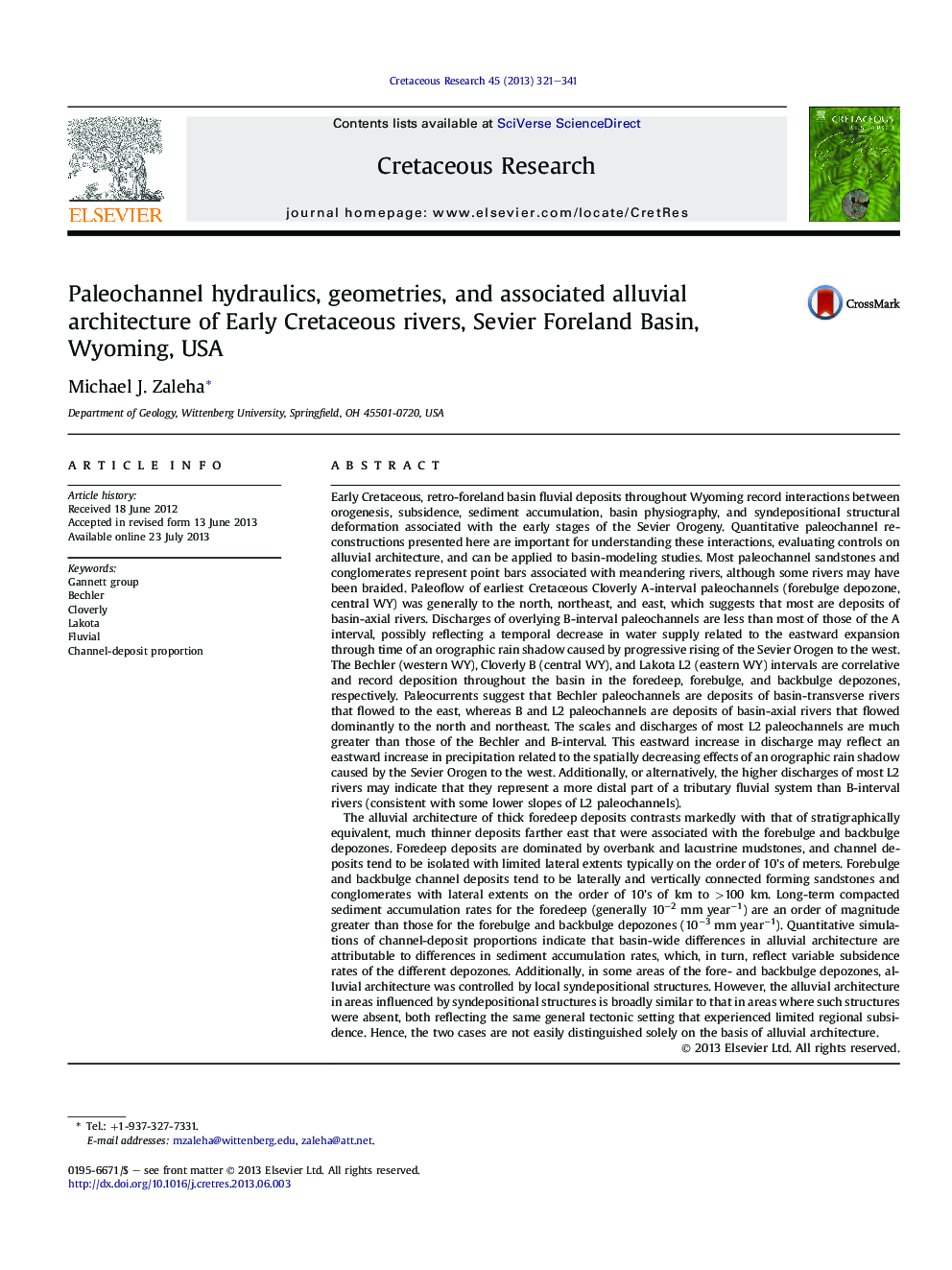| کد مقاله | کد نشریه | سال انتشار | مقاله انگلیسی | نسخه تمام متن |
|---|---|---|---|---|
| 4747297 | 1642077 | 2013 | 21 صفحه PDF | دانلود رایگان |

• Data and results applicable to alluvial architecture and basin-modeling studies.
• Discharges possibly reflect effect of an orographic rain shadow.
• Differences in alluvial architecture due to variable deposition rates across basin.
• Channel-deposit proportion is inversely related to depositions rates.
• Syndepositional structures in basin controlled alluvial architecture locally.
Early Cretaceous, retro-foreland basin fluvial deposits throughout Wyoming record interactions between orogenesis, subsidence, sediment accumulation, basin physiography, and syndepositional structural deformation associated with the early stages of the Sevier Orogeny. Quantitative paleochannel reconstructions presented here are important for understanding these interactions, evaluating controls on alluvial architecture, and can be applied to basin-modeling studies. Most paleochannel sandstones and conglomerates represent point bars associated with meandering rivers, although some rivers may have been braided. Paleoflow of earliest Cretaceous Cloverly A-interval paleochannels (forebulge depozone, central WY) was generally to the north, northeast, and east, which suggests that most are deposits of basin-axial rivers. Discharges of overlying B-interval paleochannels are less than most of those of the A interval, possibly reflecting a temporal decrease in water supply related to the eastward expansion through time of an orographic rain shadow caused by progressive rising of the Sevier Orogen to the west. The Bechler (western WY), Cloverly B (central WY), and Lakota L2 (eastern WY) intervals are correlative and record deposition throughout the basin in the foredeep, forebulge, and backbulge depozones, respectively. Paleocurrents suggest that Bechler paleochannels are deposits of basin-transverse rivers that flowed to the east, whereas B and L2 paleochannels are deposits of basin-axial rivers that flowed dominantly to the north and northeast. The scales and discharges of most L2 paleochannels are much greater than those of the Bechler and B-interval. This eastward increase in discharge may reflect an eastward increase in precipitation related to the spatially decreasing effects of an orographic rain shadow caused by the Sevier Orogen to the west. Additionally, or alternatively, the higher discharges of most L2 rivers may indicate that they represent a more distal part of a tributary fluvial system than B-interval rivers (consistent with some lower slopes of L2 paleochannels).The alluvial architecture of thick foredeep deposits contrasts markedly with that of stratigraphically equivalent, much thinner deposits farther east that were associated with the forebulge and backbulge depozones. Foredeep deposits are dominated by overbank and lacustrine mudstones, and channel deposits tend to be isolated with limited lateral extents typically on the order of 10's of meters. Forebulge and backbulge channel deposits tend to be laterally and vertically connected forming sandstones and conglomerates with lateral extents on the order of 10's of km to >100 km. Long-term compacted sediment accumulation rates for the foredeep (generally 10−2 mm year−1) are an order of magnitude greater than those for the forebulge and backbulge depozones (10−3 mm year−1). Quantitative simulations of channel-deposit proportions indicate that basin-wide differences in alluvial architecture are attributable to differences in sediment accumulation rates, which, in turn, reflect variable subsidence rates of the different depozones. Additionally, in some areas of the fore- and backbulge depozones, alluvial architecture was controlled by local syndepositional structures. However, the alluvial architecture in areas influenced by syndepositional structures is broadly similar to that in areas where such structures were absent, both reflecting the same general tectonic setting that experienced limited regional subsidence. Hence, the two cases are not easily distinguished solely on the basis of alluvial architecture.
Journal: Cretaceous Research - Volume 45, October 2013, Pages 321–341